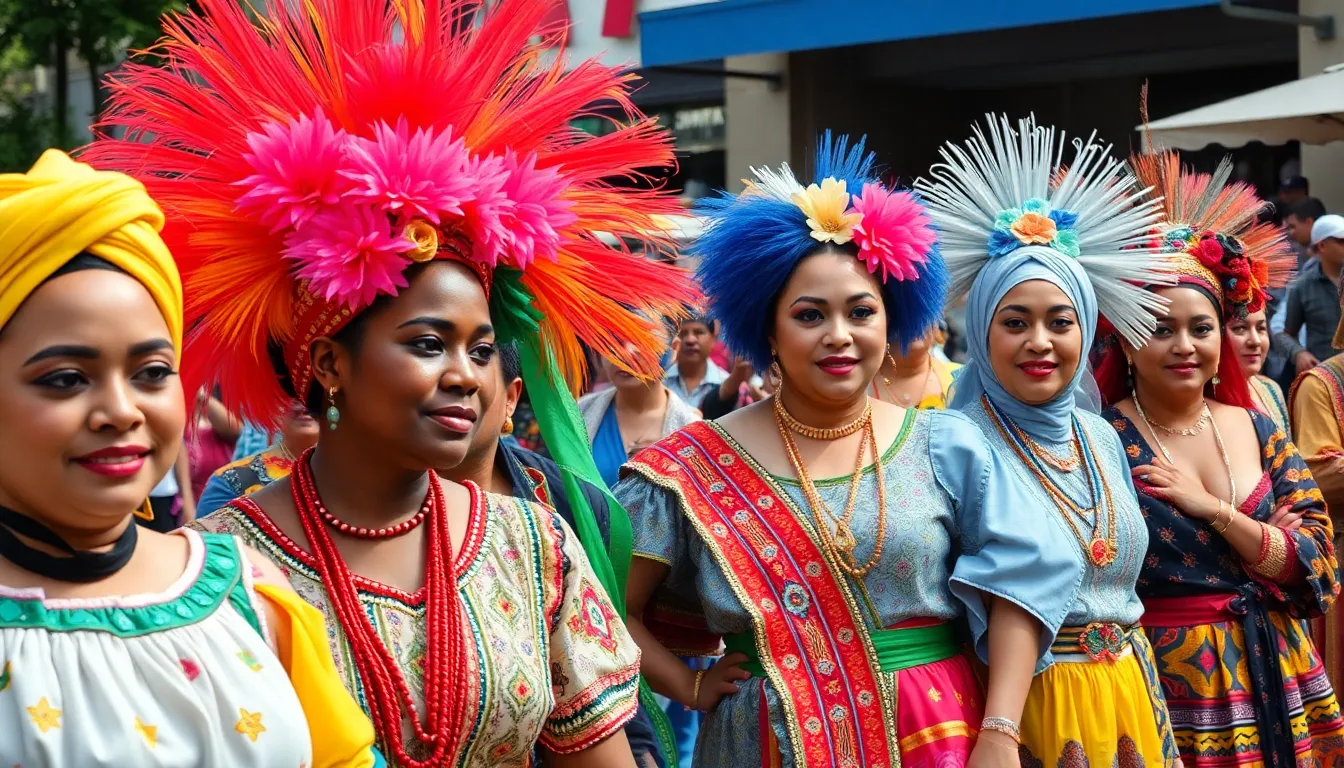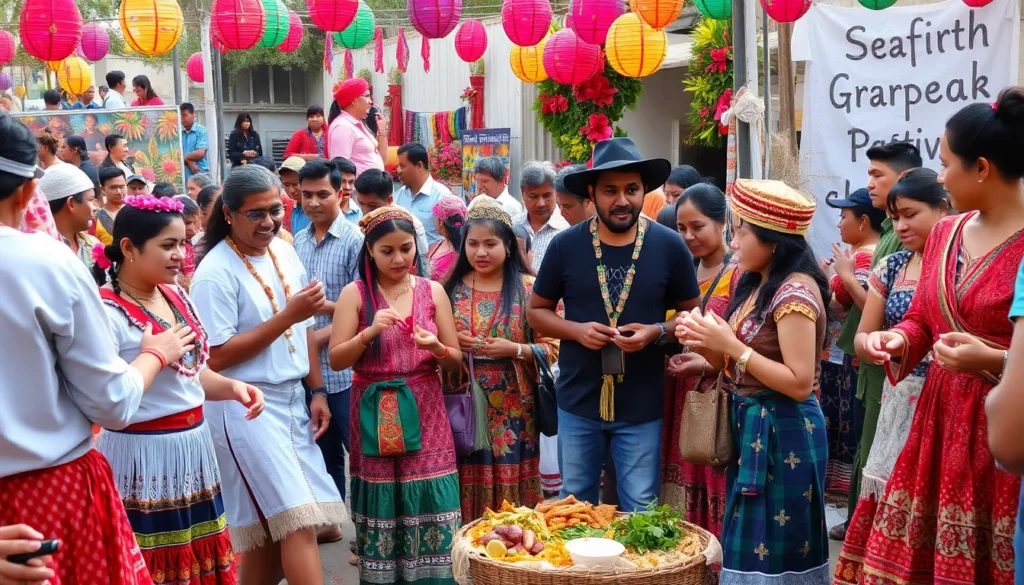Table of Contents
ToggleIn a rapidly changing global landscape, understanding cultural dynamics is more crucial than ever. The Cultural World Report offers valuable insights into how diverse traditions, beliefs, and practices shape societies. It highlights the interplay between culture and various aspects of life, from politics to economics, revealing the threads that connect humanity across borders.
This report dives deep into the cultural shifts and trends that define our times. By exploring the impact of globalization, technology, and social movements, it paints a vivid picture of the world’s cultural landscape. Readers will gain a clearer understanding of how cultural forces influence identity, community, and creativity, making it an essential resource for anyone interested in the complexities of our interconnected world.
Overview of the Cultural World Report
The Cultural World Report offers in-depth analyses of cultural trends and dynamics across global societies. It identifies significant shifts in traditions, beliefs, and artistic expressions that shape contemporary life. The report provides data-driven insights on how cultural factors intersect with politics, economics, and social issues.
Key findings in the report include:
- Cultural Shifts: The report highlights how globalization and technology transform community interactions and cultural practices.
- Identity Formation: It analyzes how cultural affiliations and heritage influence individual and collective identities.
- Creativity Trends: The report showcases emerging creative movements that arise from diverse cultural backgrounds and contribute to societal change.
The Cultural World Report utilizes comprehensive research methodologies, including surveys and case studies. It presents qualitative and quantitative data, enabling a nuanced understanding of the complexities within cultural landscapes. This resource proves invaluable for policymakers, researchers, and cultural practitioners interested in navigating the global cultural environment.
Key Findings in the Latest Report

The Cultural World Report unveils crucial insights into global cultural dynamics and trends. It illustrates the evolving interactions shaped by globalization, technology, and social movements.
Global Cultural Trends
Global cultural trends reveal significant shifts influenced by technological advancements and globalization. Increased digital connectivity fosters cross-cultural exchanges, reshaping identities and traditions. Data shows that over 70% of individuals engage with online cultural content, enhancing exposure to diverse practices. Emerging creative movements focus on sustainability and inclusivity, highlighting the intersection of artistic expression with social issues. Moreover, the blending of traditional art forms with modern techniques leads to innovative expressions, contributing to a dynamic global cultural landscape.
Regional Highlights
Regional highlights showcase distinct cultural shifts across various societies. For instance, European nations report a revival of local traditions, with 60% of respondents prioritizing heritage preservation amidst cultural homogenization. In contrast, countries in Asia experience rapid modernization, with a young population increasingly embracing Western influences while retaining traditional values. Africa emphasizes community-driven artistic expressions, with a 50% rise in collaborative projects promoting cultural dialogue. The Americas reveal a mix of indigenous revitalization and multiculturalism, with festivals celebrating cultural diversity gaining popularity. These regional insights illustrate the nuanced interplay between tradition and modernity across the globe.
Impact on Global Cultural Development
The Cultural World Report sheds light on the multifaceted effects of cultural dynamics on global development. It highlights economic implications and social and political aspects crucial for understanding contemporary societies.
Economic Implications
Cultural development significantly impacts economies worldwide. Many industries, including tourism and creative arts, benefit from cultural diversity and heritage. In 2021, the global creative economy generated over $2.25 trillion, demonstrating the financial potential of cultural engagement. Regions that invest in preserving cultural heritage experience higher levels of tourism, increasing local revenue. Creative endeavors also foster job creation, with the arts sector employing more than 4.5 million people in the United States alone. Collaboration between local artisans and global markets enhances cultural exports and stimulates economic growth. Policymakers must recognize the economic value of culture and support initiatives that promote cultural integration and innovation.
Social and Political Aspects
Cultural dynamics influence societal structures and political landscapes. Engaging with diverse cultural expressions promotes social cohesion and understanding. The report indicates that communities with strong cultural ties exhibit lower instances of conflict and increased civic participation. Over 80% of surveyed individuals believe that cultural activities strengthen community bonds. Politically, cultural movements often drive change, as seen in social movements advocating for human rights and environmental sustainability. For instance, the global climate movement incorporates cultural practices, highlighting the intersection of culture and activism. Awareness and acceptance of diverse cultural perspectives allow for more inclusive policies, fostering harmony in increasingly multicultural societies.
Critiques and Challenges
The Cultural World Report faces various critiques and challenges that influence its reception and applicability. By examining limitations and public perceptions, one finds the complexities of conveying cultural narratives.
Limitations of the Report
The report’s scope may not encompass all cultural aspects, leading to potential oversights in representing minority cultures. Sampling methods employed could introduce bias, as they often rely on available data from specific demographics, neglecting less-accessible communities. Additionally, the report may struggle with an evolving cultural landscape; rapid changes in technology and societal values can outpace analysis, leaving instances inadequately captured. The reliance on quantitative data without sufficient qualitative context limits depth in understanding cultural intricacies, particularly in regions with dynamic cultural expressions.
Public Reception and Media Coverage
Public and media responses to the report vary significantly. Some critics argue that mainstream media often oversimplifies the findings, focusing on sensational elements rather than nuanced insights. This can mislead public discourse, reducing complex cultural dynamics to soundbites. In contrast, academic circles may appreciate the report for its empirical data while critiquing the lack of intersectional perspectives in cultural analysis. Advocacy groups sometimes leverage the report to raise awareness around cultural issues, highlighting the importance of inclusivity and representation. This disparity in reception emphasizes the need for ongoing dialogue surrounding the report’s implications in broader cultural discussions.
The Cultural World Report highlights the intricate tapestry of global cultural dynamics and their profound impact on society. As cultures evolve in response to globalization and technological advancements, understanding these changes becomes essential for fostering social cohesion and economic growth. The report’s insights into regional trends and emerging movements underscore the need for inclusivity and representation in cultural discourse.
By acknowledging the complex interplay between culture, politics, and economics, stakeholders can better navigate the challenges and opportunities presented by an interconnected world. The findings encourage a deeper appreciation for diverse cultural expressions and the vital role they play in shaping identities and communities. As the world continues to change, the insights from the Cultural World Report will remain invaluable for those seeking to understand and influence the cultural landscape.




